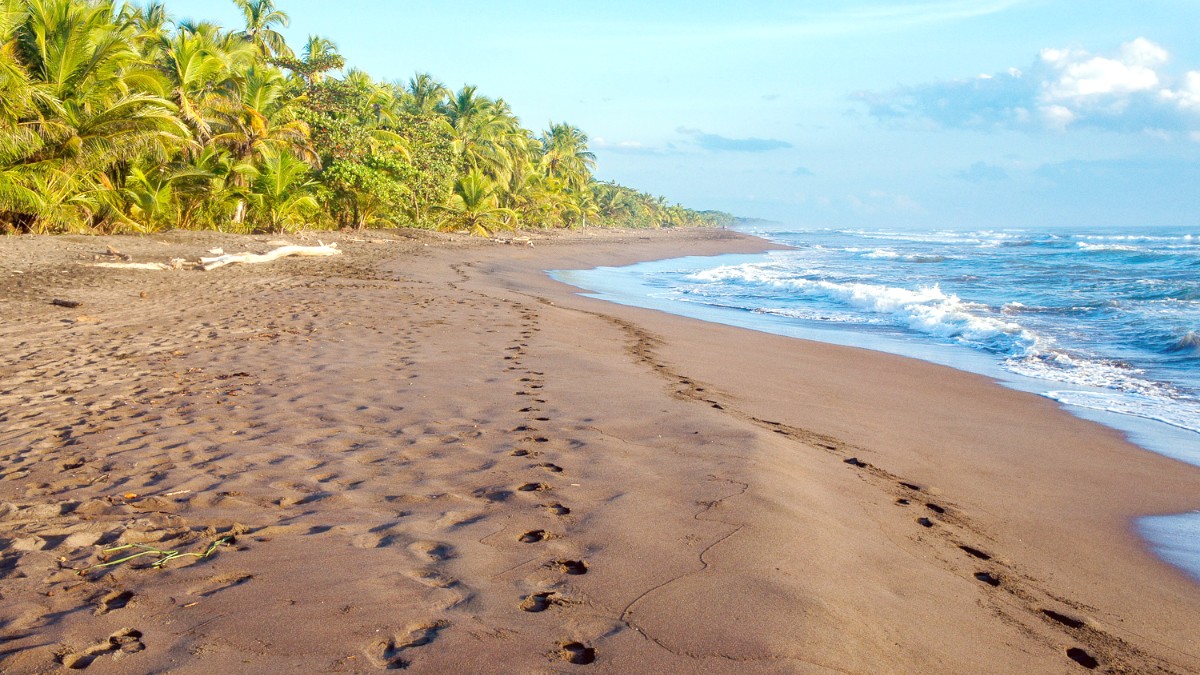
Central Pacific Coast, Costa Rica
The town itself bustles with activity. Shops line the main avenue, offering everything from surf gear to local crafts. Restaurants serve up fresh seafood, traditional Costa Rican dishes, and international flavors. As the day ends, the sky transforms into a canvas of oranges and purples, painting spectacular sunsets over the Pacific. Afterwards, the town’s nightlife awakens, with live music, lively bars, and dancing spots.
Visitors often choose Jacó for its accessibility and ease of travel. Just a short drive from San José, it presents immediate immersion into Costa Rica's beach lifestyle. Whether you plan to catch your first wave, explore the rich biodiversity of nearby rainforests, or simply unwind by the ocean, Jacó creates the setting.
This guide details how to experience the best of this lively destination. Expect to make memories in a place where the rhythm of the ocean shapes daily life.
Jacó sits on Costa Rica's Central Pacific Coast, positioned perfectly between lush rainforest mountains and the Pacific Ocean. This location distinguishes its character. The town lies on a flat coastal plain, making movement by foot or bicycle uncomplicated. The main beach, Playa Jacó, is a long, slightly curving stretch of dark volcanic sand, extending approximately four kilometers. This west-facing orientation leads to spectacular sunsets over the ocean almost every evening.
The region around Jacó forms part of a transitional forest zone. Here, dry tropical forests meet the wetter rainforests, creating a habitat rich in biodiversity. This unique ecological position means characteristic wildlife from both environments appears. Just a short drive north, Carara National Park protects this transition zone, providing opportunities for birdwatching, especially for spotting Scarlet Macaws. The park’s proximity helps preserve natural surroundings and creates a green backdrop to coastal development.
Behind the town, holding hidden waterfalls and panoramic viewpoints.
Available in the hills for adventure seekers.
Via smooth, paved highways (Route 27, then Route 34).
A few kilometers south, known for stronger, consistent waves for experienced surfers.
North of Jacó, home to Los Sueños Resort and Marina for sport fishing and golfing.
Jacó acts as a central point, giving uncomplicated movement to various coastal attractions, each presenting a different facet of the Pacific coastline.
Further south, the coast extends towards the Manuel Antonio region, known for its pristine national park and white sand beaches.
The blend of approachable beach, mountain adventure, and rich nature defines Jacó’s geographical charm, making arrival and departure straightforward.
To grasp the layout of Jacó and its surrounding areas, consider a map app on your phone. This aids efficient walk and ride planning.
Jacó’s history, compared to some of Costa Rica's older colonial towns, highlights its modern development as a tourism hub. It was originally a small fishing village, a quiet coastal settlement largely disconnected from the country’s central valley. Its transformation began in the mid-20th century, as roads improved and Costa Rica started to build its tourism industry. The consistent waves of Playa Jacó and the nearby Playa Hermosa drew surfers, marking the area for international visitors.
The town expanded organically, driven by the increasing number of tourists and expatriates drawn to its beaches and relaxed lifestyle. Unlike towns founded on colonial agriculture or mining, Jacó’s growth reflects its appeal as a leisure destination. Instead, its 'history' is one of rapid expansion, adapting to international tourism needs.
Initially a quiet coastal settlement, Jacó operated as a small fishing village.
Road improvements brought surfers and tourist interest to the region.
Rapid expansion into a comprehensive tourist hub with diverse amenities.
Over the decades, Jacó evolved from a simple surf destination into a more comprehensive tourist center. Hotels, restaurants, and entertainment venues multiplied, presenting a broader range of amenities. This development brought a diverse population, including many foreigners who chose to live and open businesses here.
Jacó presents a dynamic overview of Costa Rica's Central Pacific Coast. It is a beach town recognized for its lively atmosphere, consistent surf, and uncomplicated access to both ocean adventures and rainforest exploration. This town forms a convenient base for a Costa Rican vacation, especially if you plan to combine beach relaxation with active pursuits.
Playa Jacó offers swimming, sunbathing, and waves. Surf schools stand ready with lessons and board rentals, a top spot for beginners. Experienced surfers find stronger breaks a short distance south at Playa Hermosa.
Beyond the beach, Jacó serves as a starting point for varied outdoor activities. Consider soaring through the rainforest canopy on a zip-line tour, exploring jungle trails on an ATV, or embarking on a white-water rafting adventure on nearby rivers. Wildlife viewing abounds, especially in Carara National Park, where you might spot Scarlet Macaws, monkeys, and sloths. The Tarcoles River, famed for its crocodiles, also lies a short drive away.
After a day of adventure, Jacó’s town center becomes active. Avenida Pastor Diaz, the main street, features an array of dining options, from local "sodas" serving traditional Costa Rican dishes to international restaurants for every taste. Shops sell souvenirs, surf gear, and local artisan crafts.
Jacó pulsates with energy from dawn until late night, offering a dynamic environment.
Known for consistent waves, suitable for both beginners and experienced surfers.
Easy access to rainforests, wildlife viewing, and outdoor adventures.